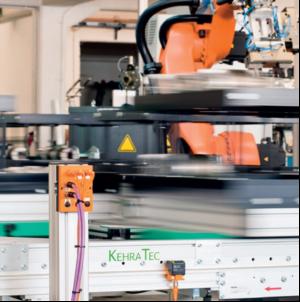

|
Edward Lowton
Editor |


|
| Home> | Plant, Process & Control | >Process equipment | >RFID with Profibus-DP |
ARTICLE
RFID with Profibus-DP
25 January 2013
New from ifm electronic is the RELAY RANGE DTE100 RFID evaluation unit with integrated Profibus-DP interface. Also featuring a web server, the new system platform can be used to track tooling, for quality assurance suc

New from ifm electronic is the RELAY RANGE
DTE100 RFID evaluation unit with
integrated Profibus-DP interface.
Also featuring a web server, the new system platform can be used to track tooling, for quality assurance such as electronic route cards, in assembly/ handling technology for the automotive industry and in conveying for part tracking.
A compact device in a robust housing, the DTE100 can be installed directly on the machine. It acts as the evaluation unit for up to four attached RFID antennas and transmits data collected via the Profibus-DO interface. Set-up and integration into the higher-level automation/process control is uncomplicated, and program examples are supplied.
The four connections are multipurpose, so where only one or two RFID antenna inputs are needed the ports can be used easily as standard digital inputs or even as an output.
The range of antennas makes any identification task easy, with systems for different read/write distances and data rates. There are LF transponders with up to 2 Kbit-memory and HF transponders with 16 Kbits as FRAM versions which can be rewritten an unlimited number of times.
Also featuring a web server, the new system platform can be used to track tooling, for quality assurance such as electronic route cards, in assembly/ handling technology for the automotive industry and in conveying for part tracking.
A compact device in a robust housing, the DTE100 can be installed directly on the machine. It acts as the evaluation unit for up to four attached RFID antennas and transmits data collected via the Profibus-DO interface. Set-up and integration into the higher-level automation/process control is uncomplicated, and program examples are supplied.
The four connections are multipurpose, so where only one or two RFID antenna inputs are needed the ports can be used easily as standard digital inputs or even as an output.
The range of antennas makes any identification task easy, with systems for different read/write distances and data rates. There are LF transponders with up to 2 Kbit-memory and HF transponders with 16 Kbits as FRAM versions which can be rewritten an unlimited number of times.
MORE FROM THIS COMPANY
OTHER ARTICLES IN THIS SECTION

















